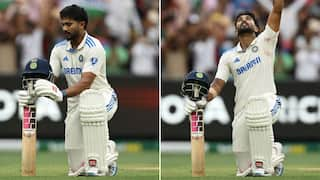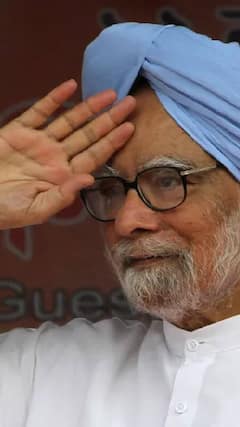A dream of clean water and clean India for all

Bhopal (Madhya Pradesh) [India], June 19 (ANI): Our existence is connected with water and is vital to our cleanliness.
Safe drinking water and sanitation are issues related to human rights, but the pictures of Parra village in Palera block of Tikamgarh district of Madhya Pradesh show a serious picture of severe water crisis and cleanliness in our country.
Nearly 600 families of this village, battling unprecedented water scarcity, are using the septic tank of toilets built under Swachh Bharat Mission to store drinking water.
In the village of Ramnagar, Majhgawah tehsil, of Satna district, the only water source is five kilometers away from the village on which the people are dependent for all their water needs.
According to the DB Post newspaper, women have to walk thirty kilometers, in which fifteen kilometers journey is with the burden of water. This has a very adverse effect on pregnant women.
Most of the women of the village either have an abortion or have lost their child. Similarly, in Damoh districts village Tendukheda, people have to climb down approximately 25 feet below the earth's surface for water.
A water crisis is emerging which is in effect our own creation. Over the last few decades, due to exploitation of ground water in the world, the levels of groundwater has decreased faster than expected, due to lack of conservation, water bodies are continuously disappearing.
We have no solid and sustainable plan to deal with this. As always, the most serious victims of this emergency like situation are people of poor and backward areas. 18.2 percent population in rural areas is dependent on ponds and lakes which are getting dried and contaminated fast.
Likewise, in the slums in the urban areas and the large population living in small colonies, getting clean water is a problem. This is probably the reason that the root cause of 59 percent health problems in the country is due to contaminated water. India is among the few countries where most children die from waterborne diseases like diarrhea.
According to the 'World Water Development Report 2018' released by the UNESCO, if the situation is not resolved on time, then by 2050, more than half of the world's population will be facing a water crisis.
According to this report, currently 27 percent of the world's population is battling a water problem. This, the UNESCO report says, is due to lack of water or unavailability of clean water; the most affected will be the Asian countries, where more than 73 percent of the population will face a serious water crisis.
At present, about 60 percent to 70 percent of India's population is suffering from a severe water shortage. According to the World Bank, about 16 crore Indians are deprived of clean drinking water. If we still do not listen then the situation will soon get out of control.
The Center for Science and Environment (CSE) has warned that by 2030, nearly 21 of our cities will reach the 'de zero' status like that of Cape Town.
In fact, there is a triple problem of water in our country, on the one hand, groundwater is going down rapidly and the system of water conservation is very weak, marketing has made water a commodity item. Today, the water business has become a game of crores of rupees.
The solution to recover from this crisis is not even in the privatisation of water. The water crisis is multi-dimensional, for which the society and the government will have to make efforts at several levels, such as through the water harvesting method, to bring rainwater into the ground. The work of restoring the lakes and wells is essential and it is necessary to be in harmony with nature.
Even in the case of cleanliness, the situation is fragile. Despite all the hype, our country's lack of cleanliness remains a major challenge.
The Swachh Bharat Abhiyan was launched by the current government in October 2014 on the occasion of Gandhi Jayanti, under which, by 2019, the goal of creating a clean India was made. According to the United Nations Organisation, open defecation is done by one billion people in the world, out of which 60 percent are in India.
The 'Sampoorna Svachchhta Abhiyaan Kaaryakram' (Total Cleanliness Campaign Program) was started by the Government of India in 1999, whose basic purpose was to bring complete cleanliness in rural India and to eliminate open defecation by 2012.
The main reason for the failure of this program was that it was thought of before it was made that if people were given access to the facilities, then people would use it and the problem would be eliminated, but people's behaviour towards cleanliness was neglected.
In the overall cleanliness campaign, emphasis on the participation and behavior of the Gram Panchayat and local people was emphasised. But in this we got only partial success. Even today, cleanliness in India remains a serious challenge.
Present experience coming out of it is not only a solution to the problem but also to develop a system of water and sewage emissions.
The issue of garbage disposal is also associated with cleanliness. Today due to the rising urbanisation, waste management has emerged as a major problem in developing countries like India. We have built mountains of trash near our cities, the height and width of these dangerous mountains is increasing day by day. This garbage is dangerous, for both the health and the environment.
Our technology of garbage disposal is very old. We have not yet developed the understanding that garbage is a resource under which 90 percent waste can be transformed into precious manure. Garbage disposal in developed countries has been established as a business of big profits, but the waste of the city does not spread smells and diseases as a pile of dirt, but it can be recycled and new items made and biogas, electricity etc. can be produced.
The condition here is that the administration should do the job of garbage collection and segregation; this job is being done by children who end up contracting diseases such as cancer, asthma, tuberculosis and severe skin diseases.
As a society, we need to change our attitude towards cleanliness and people engaged in this work. Sustainable Development Goal (SDG) 6 states that we 'ensure availability and sustainable management of water and sanitation for all.'
Some of the targets of SDG 6 are mentioned below:
6.1 By 2030, achieve universal and equitable access to safe and affordable drinking water for all
6.2 By 2030, achieve access to adequate and equitable sanitation and hygiene for all and end open defecation, paying special attention to the needs of women and girls and those in vulnerable situations
6.3 By 2030, improve water quality by reducing pollution, eliminating dumping and minimising release of hazardous chemicals and materials, halving the proportion of untreated wastewater and substantially increasing recycling and safe reuse globally
6.4 By 2030, substantially increase water-use efficiency across all sectors and ensure sustainable withdrawals and supply of freshwater to address water scarcity and substantially reduce the number of people suffering from water scarcity
6.5 By 2030, implement integrated water resources management at all levels, including through trans-boundary cooperation as appropriate
6.a By 2030, expand international cooperation and capacity-building support to developing countries in water and sanitation-related activities and programmes, including water harvesting, desalination, water efficiency, wastewater treatment, recycling and reuse technologies
6.b Support and strengthen the participation of local communities in improving water and sanitation management
Water and sanitation are issues related to human rights; they are not confined to government programs and policies, but civil society also has an important role in terms of drinking water and sanitation. For sustainable solutions, it has to be ensured that in the cleanliness and water management, there will be active participation of communities as well as the government; only then will we be able to have clean drinking water, integrated water resources management and sustainable sanitation management for all of us.
The views expressed in the above article are that of Javed Anis of Charkha Development Communication Network. (ANI)
This story has not been edited. It has been published as provided by ANI
Trending News
Top Headlines




























